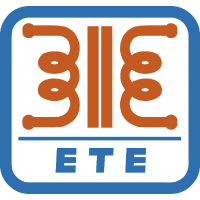We use cookies to make your experience better. To comply with the new e-Privacy directive, we need to ask for your consent to set the cookies. Learn more.
4 common mistakes with programmable logic controllers

Programmable logic controllers (PLCs) are central to modern manufacturing and automation. They control critical processes, machinery, and production lines across many sectors, including automotive, food processing, and pharmaceuticals. PLCs streamline operations by automating tasks precisely and reliably. However, it can sometimes be easy to make mistakes in their setup, use, or maintenance – and unfortunately, this can lead to downtime, inefficiencies, or safety hazards.
We have more than 20 years of experience with programmable logic controllers here at LED Controls, including all-in-one controllers and logic relays, so our team knows all about the most common pitfalls. Here are some of the biggest ones to avoid!
Incorrect wiring setup
Incorrect wiring is a prevalent issue affecting PLC performance – often causing faults, intermittent operations, or even equipment damage. Common wiring mistakes include loose connections, reversed polarity, inadequate grounding, or mislabelled terminals. Even minor oversights result in erratic sensor readings, unpredictable machine behaviour, or intermittent breakdowns that are challenging to diagnose and repair.
To prevent wiring issues, you’ll need to ensure that your team meticulously follows manufacturer guidelines. It’s particularly important to focus on clear, properly labelled wiring diagrams and rigorous verification processes during installation. Regular inspections, tightening of connections, and a structured commissioning procedure help identify errors early, preventing costly and lengthy downtime later. Additionally, technicians need to regularly review wiring after system modifications or upgrades to ensure that reliability is maintained.
Outdated software use
Using outdated software on PLC systems is a surprisingly common scenario, but it creates significant operational risks. PLC software receives regular updates and patches from manufacturers to fix vulnerabilities, enhance compatibility, and improve functionality. In turn, that means that delaying software updates exposes PLC networks to cybersecurity vulnerabilities, reduces compatibility with modern equipment, and limits overall operational efficiency. Some outdated PLC software can also cause communication problems within automation networks, disrupting data flow and control signals.
To minimise these risks, it’s a good idea to schedule regular software reviews and implement updates promptly during routine maintenance windows. Standardising the update schedule across all PLC systems simplifies the process and ensures consistency. We’d also advise ensuring that technical teams have the training they need to manage software updates, helping to reduce resistance or confusion about their implementation. Keeping PLC software current helps protect systems from security breaches, improves productivity, and ensures compatibility with newer automation technologies.
Poor documentation practices
Inadequate or inaccurate documentation is another widespread mistake affecting PLC installations. Effective documentation is vital for troubleshooting, training new staff, and maintaining operational continuity. However, documentation can sometimes become neglected, resulting in outdated diagrams, vague descriptions, missing records, or lost updates entirely. What’s more, poor documentation severely complicates troubleshooting, potentially significantly increasing downtime during equipment failures or upgrades.
For these reasons alone, it’s making sure to regularly impress upon your team the importance of robust documentation practices. Each system change must be documented clearly and immediately, no matter how minor it seems. Accurate and detailed records include wiring diagrams, logic flowcharts, software revisions, and descriptions of recent changes or modifications. It’s also a good idea to look at digital storage and centralised access, to ensure documentation remains current and available to all relevant personnel. The upshot is that consistently accurate documentation facilitates quicker troubleshooting, streamlines training processes, and improves overall system management.
Overlooking environmental factors
Finally, environmental conditions can sometimes be overlooked when installing or maintaining PLC systems. Temperature fluctuations, humidity, vibration, dust, and electromagnetic interference (EMI) are all key contaminants that significantly influence PLC reliability and performance. Poor management of these conditions causes premature component failures, erratic operation, and costly equipment damage. Neglecting environmental protection measures quickly shortens PLC lifespan and increases maintenance frequency and expense – particularly in harsh industrial settings.
To prevent this, control cabinets must be appropriately sealed, ventilated, cooled, or heated as necessary. Filters, fans, air conditioning, or specialised enclosures mitigate extreme conditions, such as high humidity or dust. Shielded cables, proper grounding techniques, and careful enclosure positioning reduce the risk from electromagnetic interference. Routine environmental checks and monitoring systems all need to be regularly conducted to detect issues before they become serious, ensuring long-term reliability and optimal PLC performance.
These are just a few of our suggestions – you may well be able to identify and resolve others within your business, maximising the lifespan of your programmable logic controllers. And of course, if you ever need replacements, or you’re looking to scale up your operations, that’s exactly where we can help here at LED Controls. With more than 20 years of experience to our name, you can explore our full range of programmable logic controllers right here on our site – and all for the very best prices.
Or if you’ve got any questions or need any advice, don’t hesitate to get in touch with our team. You can send us a quick message on our contact form, or give us a call on 01706 242050. We’re always here to help!








































